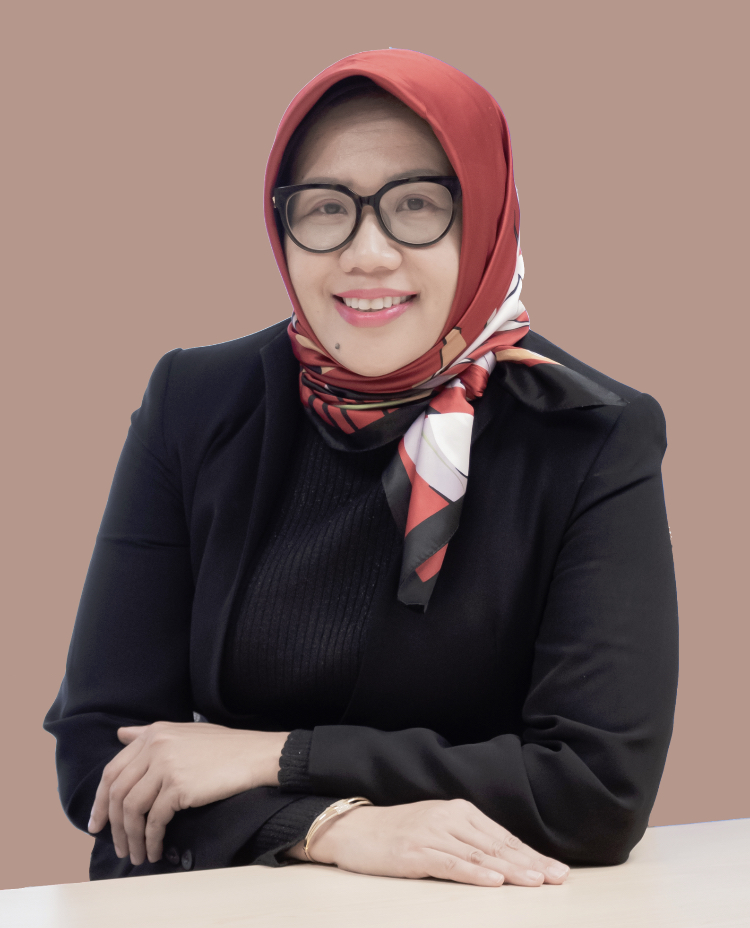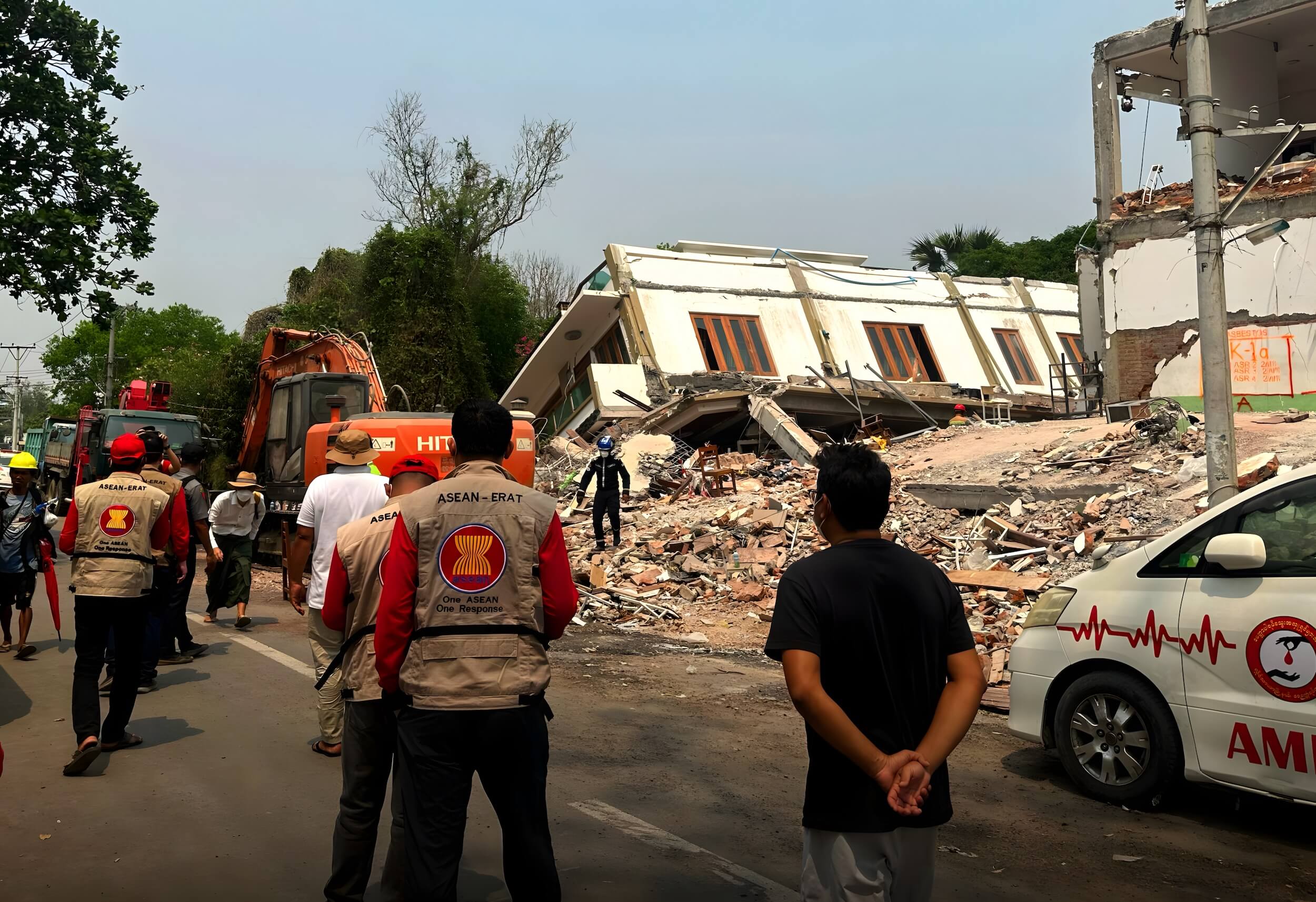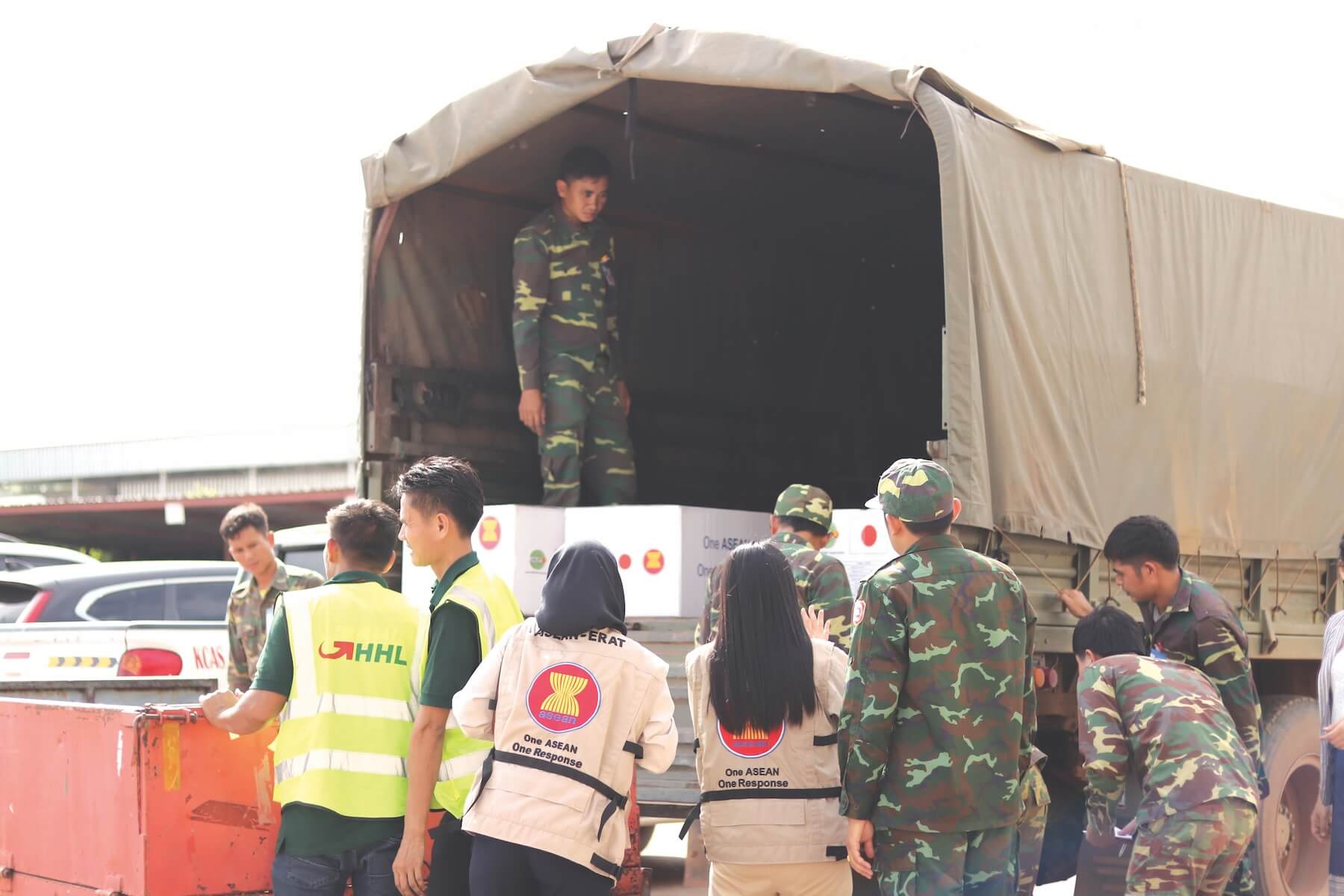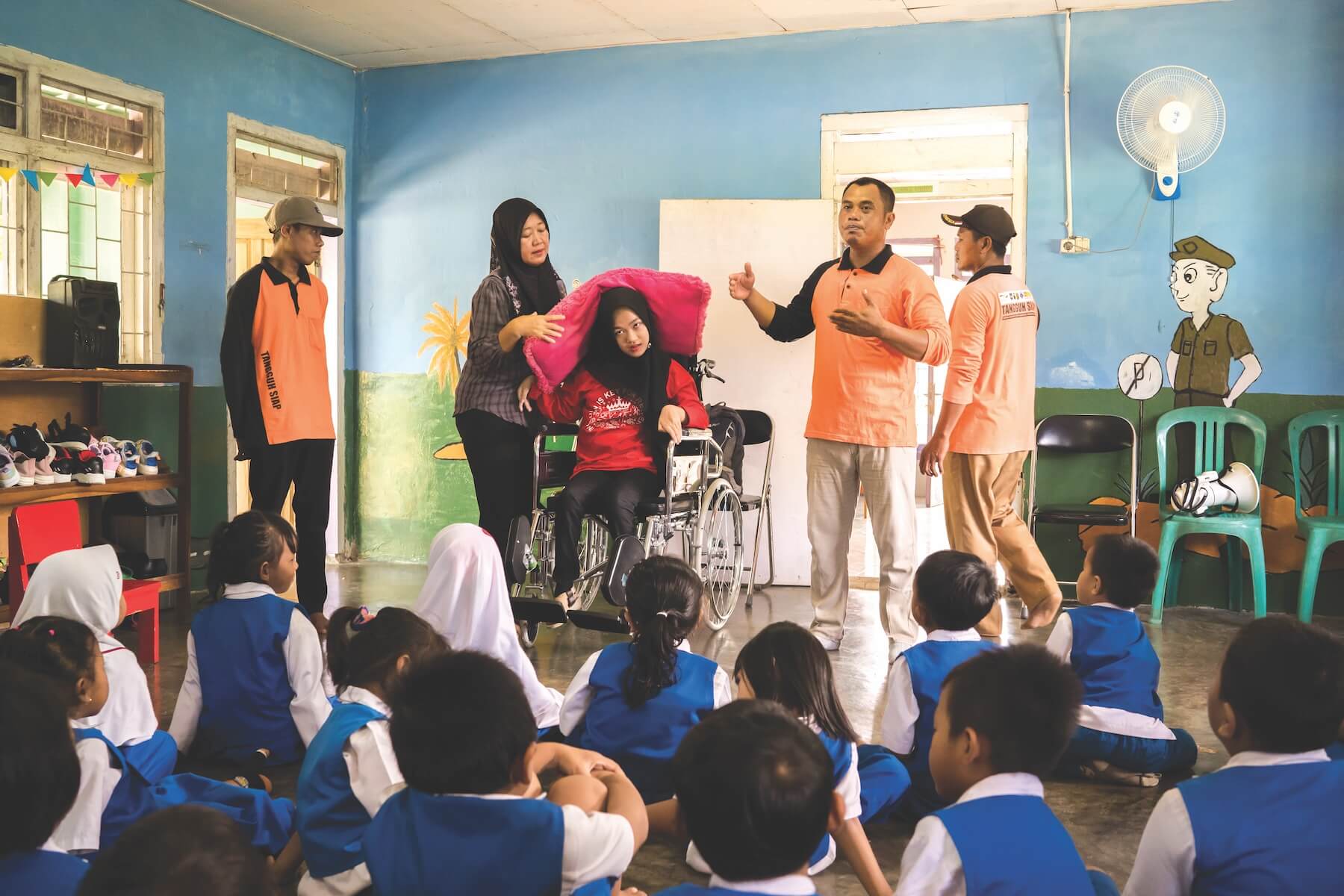




The ASEAN Agreement on Disaster Management and Emergency Response (AADMER) reflects the ASEAN Member States’ strong commitment to reduce disaster losses and respond to emergencies in the region in a collaborative manner.
Signed by the Foreign Ministers of ASEAN in Vientiane, Lao PDR in July 2005, the agreement captures the individual and collective experience of ASEAN Member States in responding to disasters. The agreement was implemented in two 5-year AADMER Work Programme (AWP) cycles: AWP 2010-2015 and 2016-2020.
AWP 2021-2025 The new AWP
2021-2025 was adopted at the 8th ASEAN Ministerial Meeting on Disaster Management (AMMDM) held on 27 November 2020. The AWP 2021-2025 highlights the whole-of-society approach, charting a comprehensive direction for concerted ASEAN cooperation with other ASEAN mechanisms and international actors in the areas of disaster management, emergency response, and humanitarian assistance. The AWP 2021-2025 also emphasises disaster risk reduction and climate change adaptation to address current gaps and challenges from the previous work programme.
The 2021-2025 Work Programme sets an example for the continuous ASEAN alignment with the regional agreements such as the ASEAN Socio-Cultural Community Blueprint 2025, ASEAN Culture of Prevention for a Peaceful, Inclusive, Resilient, Healthy and Harmonious Society, as well as the new ASEAN Declaration on Strengthening of Adaptation on Drought and ASEAN Guidelines on Disaster Social Protection to Increase Resilience. Moreover, the work programme aligns with the Sendai Framework for Disaster Risk Reduction (SFDRR) key provisions and its seven targets while maintaining the ASEAN identity and pursuing the goals set by the ASEAN Committee on Disaster Management (ACDM). The following principles guide the AWP: (i) institutionalisation, localisation and communication, (ii) finance and resource mobilisation, (iii) gender and social inclusion, (iv) multi-hazards approach, (v) innovation, (vi) partnership, and (vii) synergy.
In the next five years, the AADMER will be carried out through five priority programmes that reflect its significant provisions. These priority programmes are (i) risk assessment and monitoring; (ii) prevention and mitigation; (iii) preparedness and response; (iv) resilient recovery; and (v) global leadership.
The three ACDM working groups will oversee the implementation of the 15 sub-priorities, 30 outcomes, and 117 outputs that were developed to cover strategic areas that will be pursued under all priority programmes. These are the working groups on Prevention and Mitigation; Preparedness, Response and Recovery; and Global Leadership. The ASEAN Coordinating Centre for Humanitarian Assistance on disaster management (AHA Centre) continues its role of facilitating cooperation and coordination among the ASEAN Member States to fulfil a wider range of functions covering the whole spectrum of disaster management, as mandated by AADMER, given available resources.
Web-based Monitoring and Evaluation System
The AADMER Work Programme 2021-2025 also adopts a web-based monitoring and evaluation (M&E) system that will allow the ACDM to systematically monitor progress and help achieve results. Furthermore, the web-based system will facilitate the generation and collection of reliable monitoring data to inform the strategies and approaches for implementing the work programme. The improved M&E system will allow the ACDM to intervene and conduct more informed decision-making and planning, while the lessons learned will contribute to future programme development.
The Role of AMMDM and ACDM in the AWP 2021-2025 Implementation
In the next five years, the AMMDM will continue to fulfil its mandate to promote synergy of efforts with other ASEAN ministerial bodies to accelerate a well-coordinated, more robust, and faster ASEAN’s collective response to disasters. The AMMDM will also ensure continued progress in the development of disaster- resilient and safer communities to reduce disaster losses in the region, using AADMER as the regional policy backbone and common platform to maintain ASEAN’s Centrality.
The ACDM, meanwhile, will continue to fulfil its function as the prime mover of AADMER. Further, it will formulate and implement programmes, projects, and activities to enhance regional cooperation in all aspects of disaster management through mutual supports and activities. These are targeted to minimise the adverse consequences of disasters on ASEAN countries’ economic and social development. Singapore as AMMDM/ACDM Chair for 2021 will lead the first year of implementation with 67 outputs. The ASEAN Senior Executive Programme on Disaster Management, ASEAN Strategic Policy Dialogue on Disaster Management, and ASEAN Mapping Exercises are the three key activities of the Chair this 2021.
In addition to the above, the AADMER Work Programme’s implementation will be anchored on strengthening the relationship with ACDM Partners, including relevant dialogue partners, relevant ASEAN sectoral bodies, regional and international agencies, community-based organisations, NGOs, private sector, and individuals. New partners from the private sector, academia, think tanks, media, and faith-based organisations will be engaged as well. The ACDM and ASEAN Secretariat acknowledge the support provided by the Asian Development Bank, the Government of Canada, the Japan-ASEAN Integration Fund, and the United Nations Office for Disaster Risk Reduction in the development of the AWP 2021-2025.








